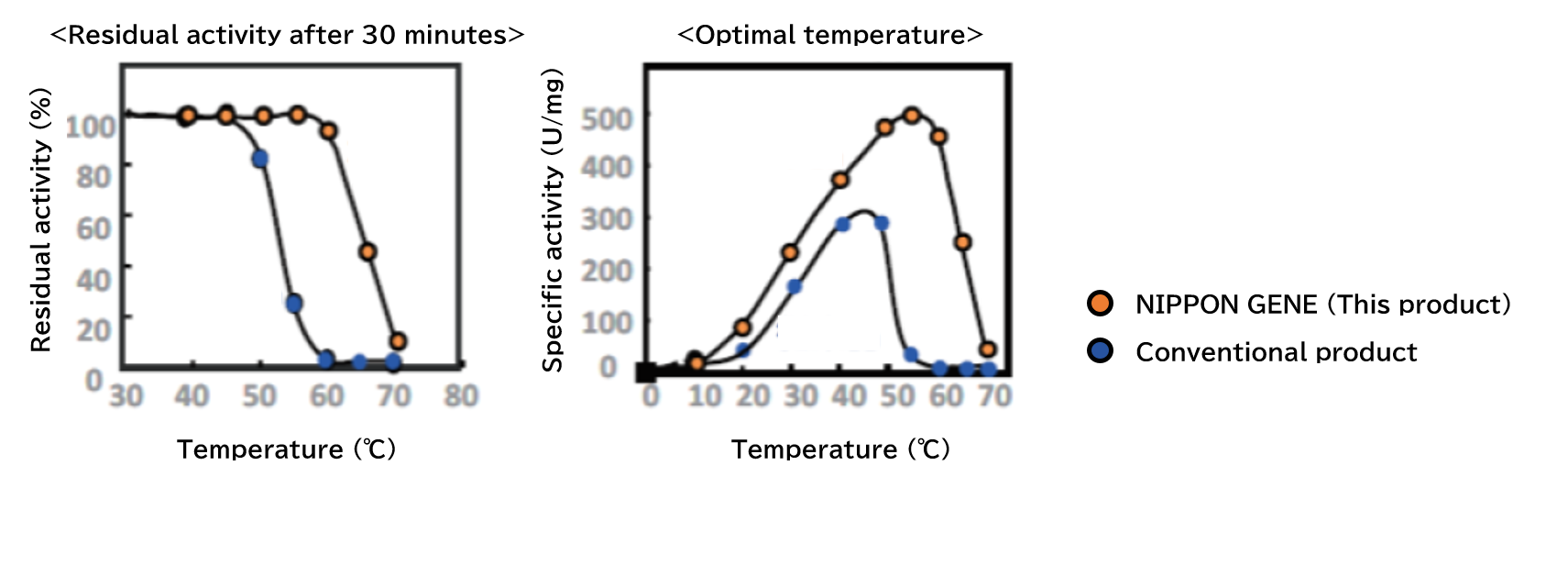Glycosidases (Thermostable)
These products are thermostable glycosidases that are suitable for reactions under high-temperature conditions.
Cellulase, Thermostable, recombinant, Solution
This product is an endo-type cellulase cloned from Pyrococcus horikoshii, a hyperthermophilic bacterium. It is highly active at reaction temperatures of ≥70℃ and remains active at 90℃ to 100℃. It can also degrade insoluble cellulose such as crystalline cellulose.
Features
・Highly active at temperatures of ≥ 70℃ and remains active at 90℃ to 100℃ (optimal temperature: ≥ 100℃)
・Degrades insoluble cellulose such as crystalline cellulose
Example of degradation

After 2 U/mL enzyme was added to 2% alkali-swollen cellulose, the mixture was allowed to react at 85℃ for 3 hours.
Chitinase, thermostable, recombinant, solution
This product is a hyperthermostable chitinase found in Pyrococcus furiosus, hyperthermostable archaebacterium. It efficiently degrades not only β-chitin, but also crystalline α-chitin, which was difficult to degrade enzymatically.
Features
・Remains active even at 85℃
・Degrades not only β-chitin, but also crystalline α-chitin
Example of degradation

Degradation of colloidal chitin, squid chitin, and crab chitin is photographed, in order from the left.
(In each photograph, the image on the left is chitin without the enzyme added, and that on the right is chitin heated in the presence of the enzyme at 85℃ for 3 hours.)
Thermostable β-Agarase
This product is an thermostable agarase derived from heat-resistant microorganisms found in the deep sea by the Japan Agency for Marine-Earth Science and Technology. It is easy and quick to use and allows recovery of large DNA fragments relatively intact.
Features
・Easy and speedy (a minimum of 10 minutes)
・Provides gel decompositions that can be used directly for cloning and restriction enzyme reactions.
・Can recover large nucleic acid fragment
・Thermostable with a high optimal temperature
・Can also be used for standard agarose
・No loss of recovery

Product List
- Open All
- Close All
For research use or further manufacturing use only. Not for use in diagnostic procedures.
Product content may differ from the actual image due to minor specification changes etc.
If the revision of product standards and packaging standards has been made, there is a case where the actual product specifications and images are different.



